d’Aaud!
The first of the year’s minor league releases, Pro Debut gives us the rare chance to see logos from farm teams on the familiar base Topps design. Brandon Nimmo with the Brooklyn Cyclones, Wilmer Flores with the Binghamton Mets, Travis d’Arnaud with the, um, Buffalo Bisons?
Card Design
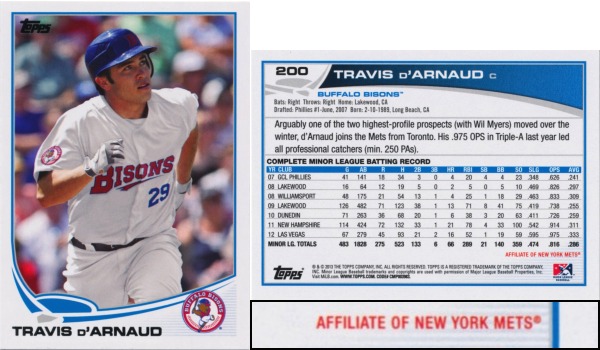
So many things wrong with this card…
Pro Debut uses the same design we’ve seen in Topps Series 1 and Topps Series 2, which I really should have gotten around to reviewing by now. So here it is in all its glory, the standard white border with a bit of color and a small spot of design by the name and team logo. While the design won’t exactly turn any heads, the choice of team might. Travis d’Arnaud never played for the Buffalo Bisons and the Bisons never used this logo as an affiliate of the New York Mets. So what the heck is going on here? Given how forthcoming Topps has been lately regarding its numerous problems, we may never know how this oddity came to be. So I guess that leaves it to me to come up with a few crackpot theories to explain its origin.
Lead Times
The simplest way to explain errors like this are the long lead times in sports card production. Sometimes you just have to get the photos out the door way ahead of release and hope for the best. It is possible that the photo deadline fell somewhere between November 20, 2012, when the new Bisons logo was unveiled, and December 17, 2013, when Travis d’Arnaud was traded to the Mets. But for a product released on June 26, 2013? Six months is an eternity in this business, so this one doesn’t make much sense.
Risk Management
A somewhat more likely scenario involves the lead times not for the photography, but for the manufactured logo patches. These would be needed in advance of card printing, so it makes sense that they would be ordered before the photography has been finalized. Based on the delays Topps apparently encountered in receiving the logo patches for 2012 Topps Heritage Minor League Edition (last-minute redemption cards were issued in their place), a solid risk management strategy would have been to order the next batch well in advance, potentially in the one-month window during which it looked like d’Arnaud would be playing for the Bisons. It wouldn’t do to have the player shown with a different team and it would be confusing to show a player with two different teams in the same product, so there’s a decent amount of logic here. And the logo on the patch isn’t the 2013 Bisons logo but the 2012 Bisons logo in 2013 colors, indicating that the ordering deadline was too soon after November 20 to do a full logo redesign. But with the error apparent so far in advance, wouldn’t ordering an updated patch have been a feasible option? We’re talking about less than 100 tiny pieces of cloth here.
Work of Art
Enough with logic, maybe they were so impressed with their artwork that they didn’t want to let it go to waste. After decades of uniform manipulation, they finally got one right, then the guy gets traded! Screw it, we’re keeping it the way it is. This one makes no sense, which is why it is my favorite option.
Token Bison
Maybe we’re overthinking this. Travis d’Arnaud is the only player from the Buffalo Bisons in 2013 Pro Debut (two mascots in the Mascot Patch insert set are the only other Bisons). It’s possible that the Bisons needed to have at least one player in the product and d’Arnaud was it. Without a replacement, Topps could have found themselves in a tough spot. A quick fix of showing d’Arnaud with the Bisons and calling it a Mets affiliate doesn’t make much sense but technically checks off the box.
Miscommunication
Or maybe this was just a colossal screw-up resulting from the many people responsible for different parts of the card not all working from the same notes. Imagine if you’re doing the final layout with the deadline fast approaching and, on card number 200, you get a picture showing a player with one team and a description showing him with a different MLB team’s affiliate. The clock is ticking, you still have 20 more cards to finish off, and you’re not being paid enough to care. In reality, that’s how cards like this are made, so this scenario wouldn’t surprise me at all.
Player Selection
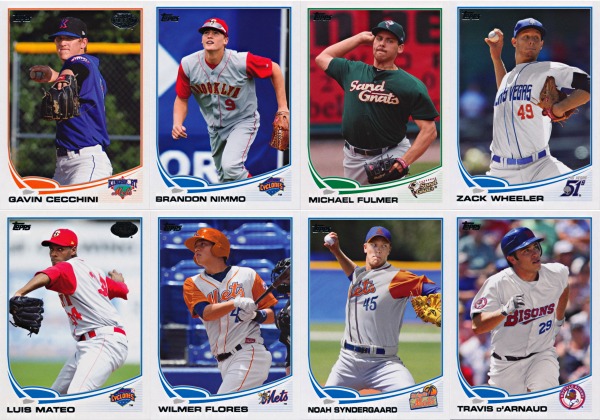
2013 Topps Pro Debut: Now with 25% pro debuts!
As for the rest of the set, there’s a mix of players from Kingsport to Las Vegas. It’s mostly first-round draft picks and top prospects here, so we’ve seen most of these guys before. Many, many times. You’ll note that Gavin Ceccini and Luis Mateo are the only ones with the Pro Debut medallion, because they’re the only ones who made their pro debut last year. That’s a bit disappointing for a product called “Pro Debut.” Brandon Nimmo and Michael Fulmer are in Pro Debut for the first time, but as first-round draft picks, they’ve been around in Topps products before. Zack Wheeler, Wilmer Flores, Noah Syndergaard, and Travis d’Arnaud have all been in Pro Debut two or three times before this (and, along with Fulmer, had insert cards in 2013 Bowman), so you would think they would have aged out of this product by now to make room for younger guys like Gabriel Ynoa, Kevin Plawecki, Darin Gorski, or Cory Mazzoni. At least Luis Mateo (the one in the Mets system, not to be confused with the other Luis Mateo) gets his first professional cards here, though I would have preferred Ynoa.
Gold Parallel
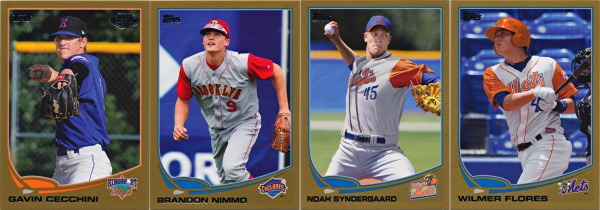
As usual, every base card has a gold parallel numbered to 50. Also as usual, I have all of them except the Wheeler. While most of these are available for less than $5 shipped, the Wheeler sells for $15-20. Or at least it would if anyone selling one would ask less than $25. So we’re at a stalemate, which will end with anyone who wants to buy one not caring anymore before anyone considering selling one accepts reality. And so the only people who will own them will be people who don’t really want them. And that’s this crazy hobby in a nutshell.
Futures Fabric
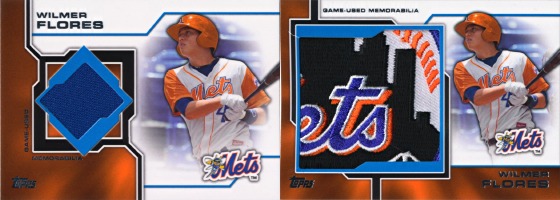
I think I own about half of this jersey by now…
Following the usual script, 2013 Pro Debut has more pieces of 2012 Futures Game jerseys first cut up in some of last years late releases. Wilmer Flores is the only Met here, with jersey swatches (plus gold parallels numbered to 50 and printing plates numbered to 1) and jumbo logo patches (numbered to 5). Zack Wheeler is conspicuously absent, indicating that his material may be needed in another product later this year (Finest maybe?).
Logo Patches

Yes, that’s a 51s player in a 2013 Bisons jersey next to the 2012 Bisons logo in 2013 Bisons colors
Like last year, we have an assortment of logo patches from Mets minor league teams, including Wilmer Flores with the Binghamton Mets, Zack Wheeler with the Las Vegas 51s, and, um, yeah. Eh, two out of three ain’t bad.
Mascots
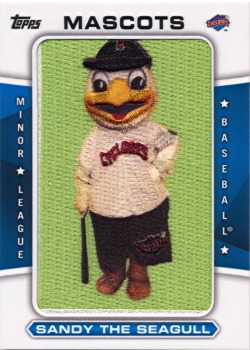
You don’t want to think about this #SandysMess
Everyone loves mascots, so after the first-ever mascot autographs in 2013 Topps Opening Day, the minor league mascots got some recognition in a manufactured patch insert set. The only Mets affiliate mascot in the bunch is Sandy the Seagull from the Brooklyn Cyclones (two Bisons mascots appear as they did in the Bisons’ Mets days, with the Blue Jays Bisons logo, so, um, I don’t know how to count that).
Conclusion
As with most of this year’s Topps releases, the value per box is fairly negligible, with the manufactured patches being worth more than most of the autographs and memorabilia cards (which are largely worthless). Most of the cards here could be obtained fairly inexpensively, making this a good source of prospect cards, though most of the prospects here are no stranger to Topps products. Notable cards are Luis Mateo’s first Topps card and Noah Syndergaard’s first base card as a Met. And the Travis d’Arnaud abomination. Yes, this product is most notable for an inexplicable freak of a card. That’s the minor leagues for you.
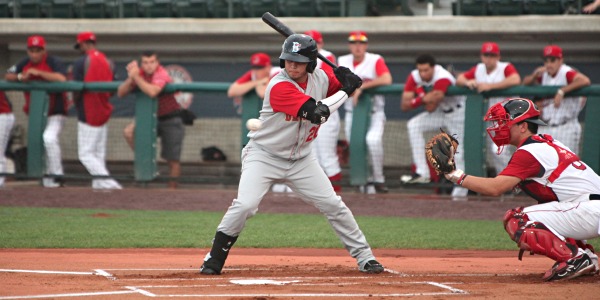
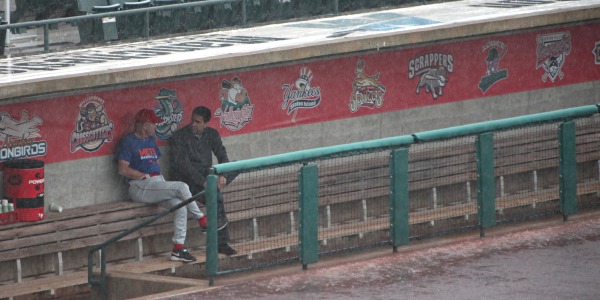
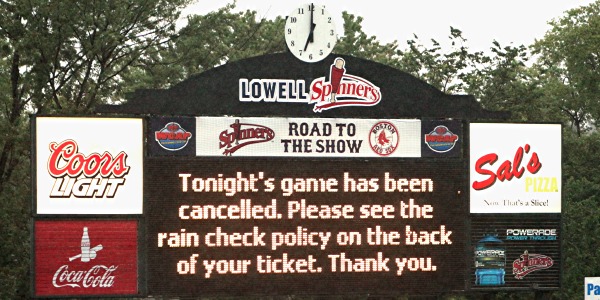

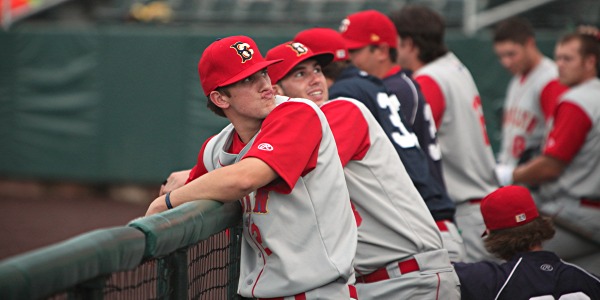
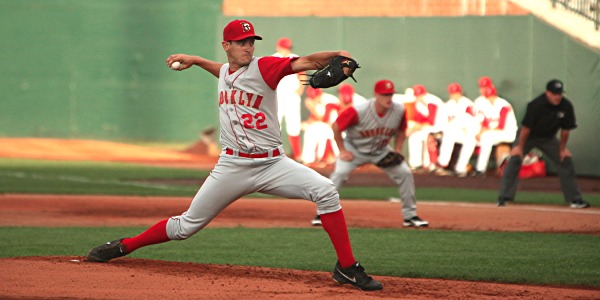
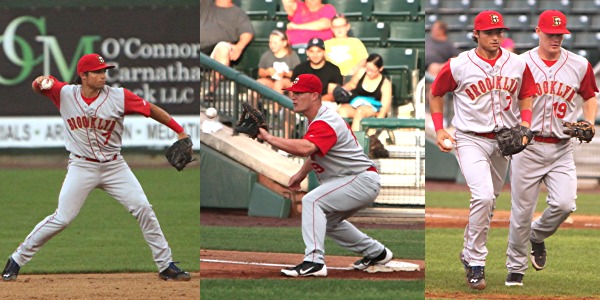
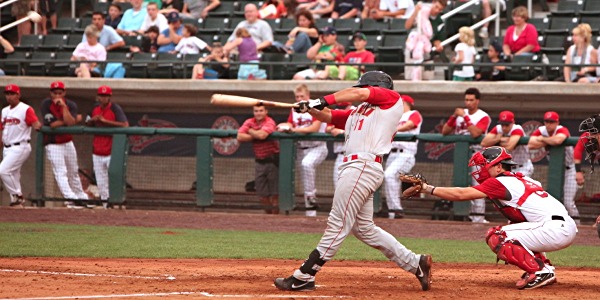
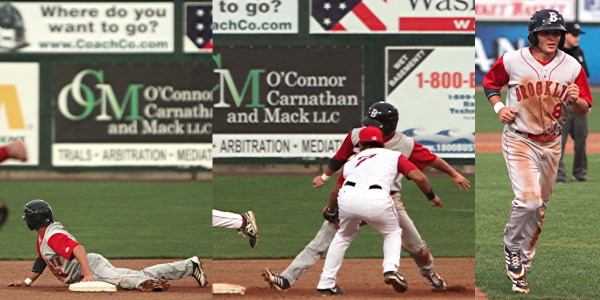
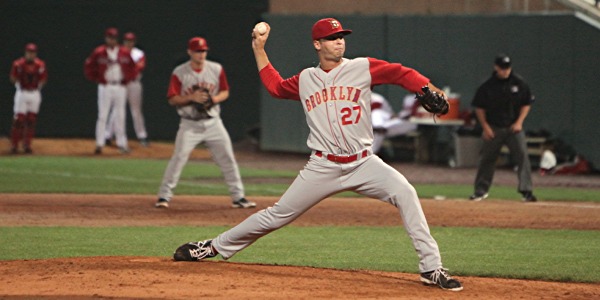
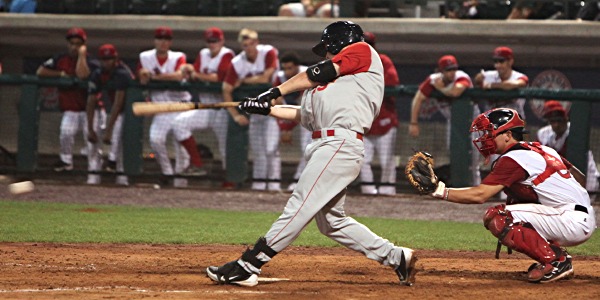






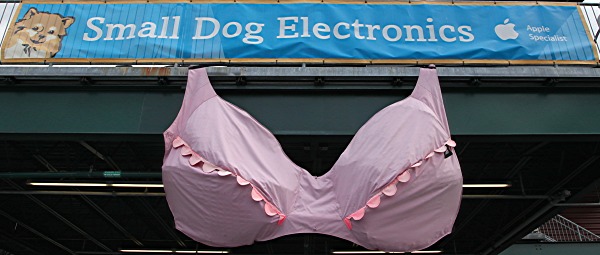
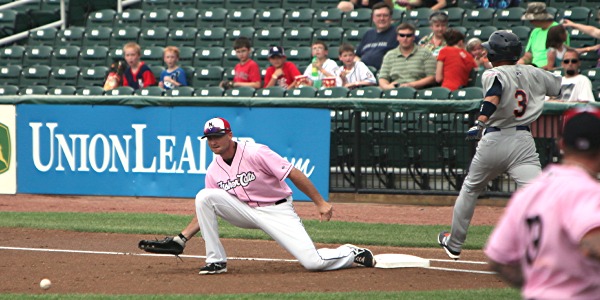
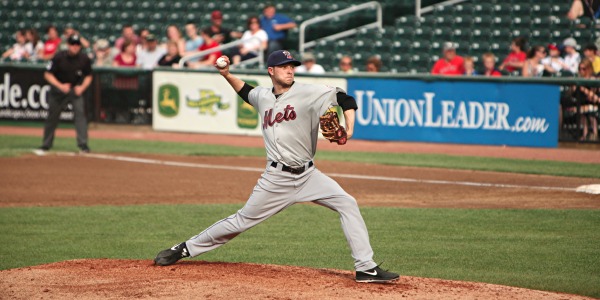
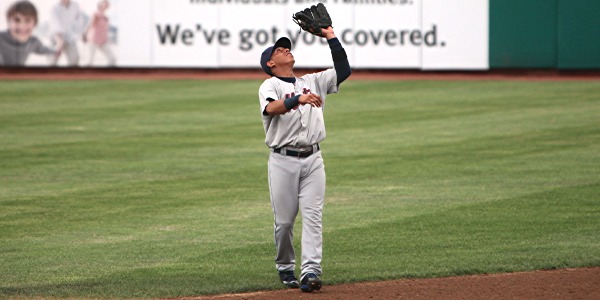
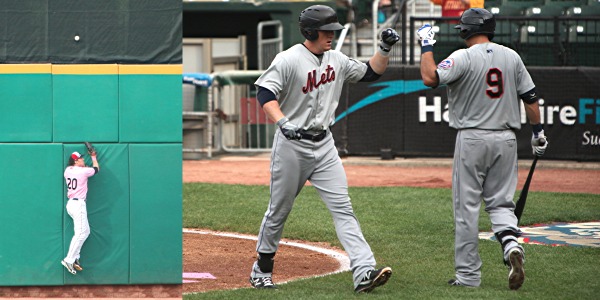
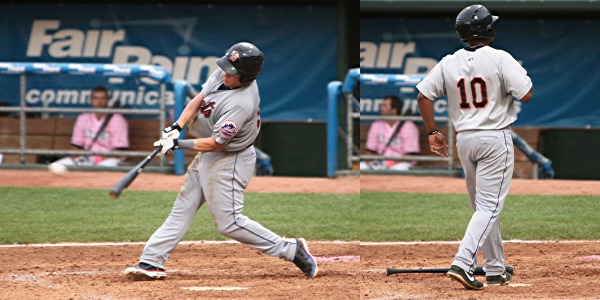
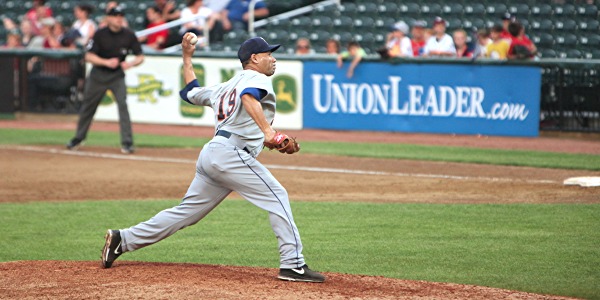
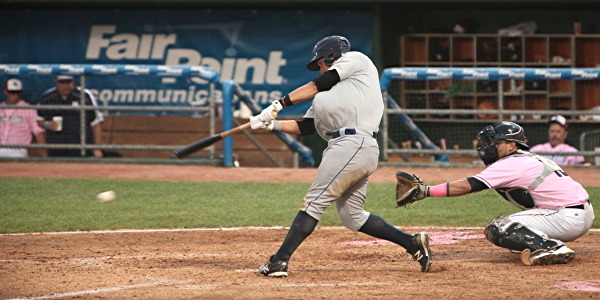
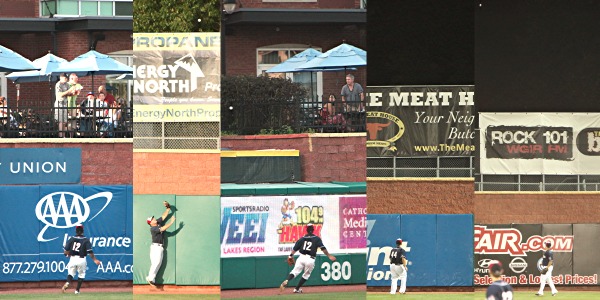
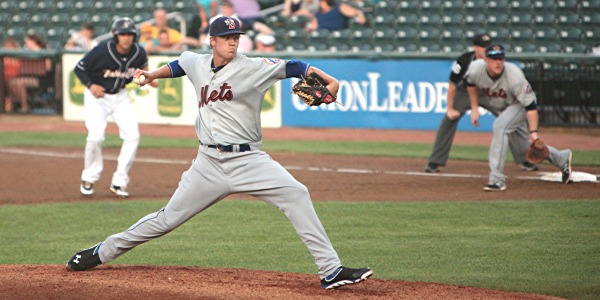
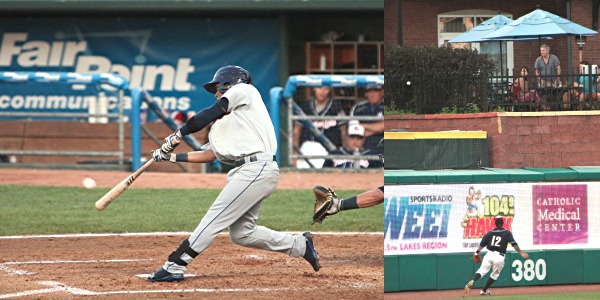

Recent Comments